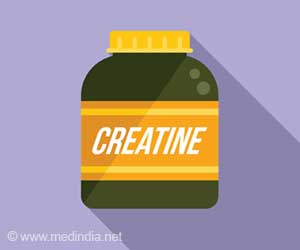New glaucoma drugs, netarsudil and latanoprostene bunod (LBN), yield large, lasting reductions in intraocular pressure (eye pressure).

- Two newly approved glaucoma drugs lower eye pressure to a great degree.
- These drugs are - netarsudil and latanoprostene bunod.
- They are scientifically known as ocular hypotensive agents.
Netarsudil and latanoprostene bunod (LBN) are two ocular hypotensive agents that have just been approved for use in humans. The drugs greatly reduce intraocular pressure (eye pressure), with lasting results in various animal models of glaucoma and in humans. Netarsudil is a rho-associated protein kinase (ROCK) inhibitor that lowers intraocular pressure by increasing the outflow of fluid through the trabecular meshwork, the primary drainage route.
Based on a comprehensive review of nonclinical studies and a phase 2 clinical study of LBN, Megan Cavet and Heleen DeCory, Bausch + Lomb, highlight the benefits of this dual-action drug for glaucoma.
Microneedles for eye-injection
In another research, researchers bring to focus, the development of microneedles that have a length of less than a millimeter and are able to target injectable therapeutics to previously unreachable areas of the eye, including closer to the retina. The authors note that improvements in the design of needles or intraocular drug delivery, including those with smaller diameters and lengths and with controlled bevel angles, will likely improve overall safety and acceptance of injected ophthalmic drug products and allow for a broader range of periocular, subretinal and suprachoroidal routes of delivery.
Takayoshi Masuoka, Juana Gallar, and Carlos Belmonte, Universida Miguel Hernancez-CSIC, Alicante, Spain and Kanazawa Medical University, Uchinada, Ishikawa, Japan, present a new study demonstrating the ability of amitriptylene, a voltage-gated sodium channel blocker, to reduce the activity of cold thermoreceptors, which contribute to the unpleasant sensations of pain in dry eye disease. They show that the effect differs in intact versus tear-deficient corneas.
"Outstanding preclinical research and industry/academia collaborations to rapidly and safely move forward vision-saving technologies are featured in this special issue," says Editor-in-Chief W. Daniel Stamer, PhD, Joseph A. C. Wadsworth Professor of Ophthalmology and Professor of Biomedical Engineering, Duke University, Durham.
References:
- Cavet Megan E. and DeCory Heleen H. The Role of Nitric Oxide in the Intraocular Pressure Lowering Efficacy of Latanoprostene Bunod: Review of Nonclinical Studies, Journal of Ocular Pharmacology and Therapeutics https://doi.org/10.1089/jop.2016.0188
- Hartman Rachel R. and Kompella Uday B. Intravitreal, Subretinal, and Suprachoroidal Injections: Evolution of Microneedles for Drug Delivery , Journal of Ocular Pharmacology and Therapeutics https://doi.org/10.1089/jop.2017.0121
- Lin Cheng-Wen, Sherman Bryan et al. Discovery and Preclinical Development of Netarsudil, a Novel Ocular Hypotensive Agent for the Treatment of Glaucoma, Journal of Ocular Pharmacology and Therapeutics https://doi.org/10.1089/jop.2017.0023















